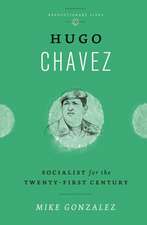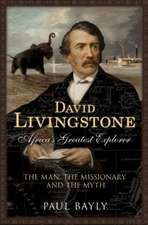The Spencers of Amberson Avenue: A Turn-of-the-Century Memoir
Autor Ethel Spencer Fotograf Charles Hart Spenceren Limba Engleză Paperback – 30 iun 1983
This appealing memoir introduces the family of Charles Hart Spencer and his wife Mary Acheson: seven children born between 1884 and 1895. It also introduces a large Victorian house in Shadyside (a Pittsburgh neighborhood) and a middle-class way of life at the turn of the century.
Mr. Spencer, who worked—not very happily—for Henry Clay Frick, was one of the growing number of middle-management employees in American industrial cities in the 1880s and 1890s. His income, which supported his family of nine, a cook, two regular nurses, and at times a wet nurse and her baby, guaranteed a comfortable life but not a luxurious one. In the words of the editors, the Spencers represent a class that "too often stands silent or stereotyped as we rush forward toward the greater glamour of the robber barons or their immigrant workers."
Through the eyes of Ethel Spencer, the third daughter, we are led with warmth and humor through the routine of everyday life in this household: school, play, church on Sundays, illness, family celebrations, and vacations. Ethel was an observant child, with little sentimentality, and she wrote her memoir in later life as a professor of English with a gift for clear prose and the instincts of an anthropologist. As the editors observe, her memoir is "a fascinating insight into one kind of urban life of three generations ago."
Mr. Spencer, who worked—not very happily—for Henry Clay Frick, was one of the growing number of middle-management employees in American industrial cities in the 1880s and 1890s. His income, which supported his family of nine, a cook, two regular nurses, and at times a wet nurse and her baby, guaranteed a comfortable life but not a luxurious one. In the words of the editors, the Spencers represent a class that "too often stands silent or stereotyped as we rush forward toward the greater glamour of the robber barons or their immigrant workers."
Through the eyes of Ethel Spencer, the third daughter, we are led with warmth and humor through the routine of everyday life in this household: school, play, church on Sundays, illness, family celebrations, and vacations. Ethel was an observant child, with little sentimentality, and she wrote her memoir in later life as a professor of English with a gift for clear prose and the instincts of an anthropologist. As the editors observe, her memoir is "a fascinating insight into one kind of urban life of three generations ago."
Preț: 140.66 lei
Nou
Puncte Express: 211
Preț estimativ în valută:
26.92€ • 28.17$ • 22.40£
26.92€ • 28.17$ • 22.40£
Carte disponibilă
Livrare economică 10-24 martie
Preluare comenzi: 021 569.72.76
Specificații
ISBN-13: 9780822953562
ISBN-10: 0822953560
Pagini: 208
Ilustrații: b&w photos throughout
Dimensiuni: 152 x 235 x 18 mm
Greutate: 0.38 kg
Ediția:1
Editura: University of Pittsburgh Press
Colecția University of Pittsburgh Press
ISBN-10: 0822953560
Pagini: 208
Ilustrații: b&w photos throughout
Dimensiuni: 152 x 235 x 18 mm
Greutate: 0.38 kg
Ediția:1
Editura: University of Pittsburgh Press
Colecția University of Pittsburgh Press
Notă biografică
Ethel Spencer (1889-1966) graduated from Radcliffe College and did graduate work at St. Hilda's Oxford. Later she was a professor of English at Carnegie Tech from 1920 to 1955 (now Carnegie Mellon University), and was the head of the Department of General Studies when she retired. The third of seven children of Charles Hart Spencer (1852-1912) and Mary Acheson Spencer (1863-1950); upper middle-class, Presbyterian, Pittsburghers, who raised their family in (then) suburban Shadyside at the turn of the 19th century. Her family lived on Amberson Avenue until the death of Mary Spencer in 1950.
Michael P. Weber and Peter N. Stearns, who edited the memoir and wrote the introduction, are historians in the Department of History and Philosophy, Carnegie-Mellon University.
Michael P. Weber and Peter N. Stearns, who edited the memoir and wrote the introduction, are historians in the Department of History and Philosophy, Carnegie-Mellon University.










